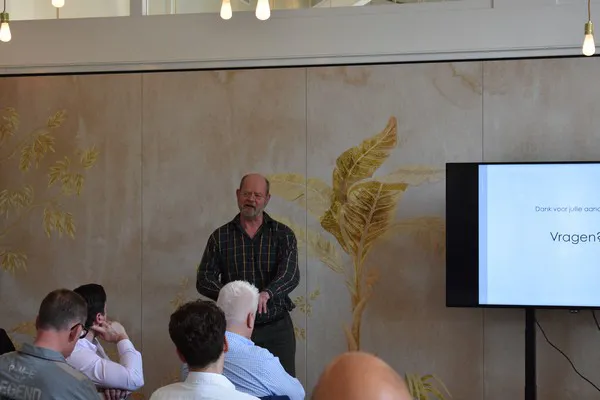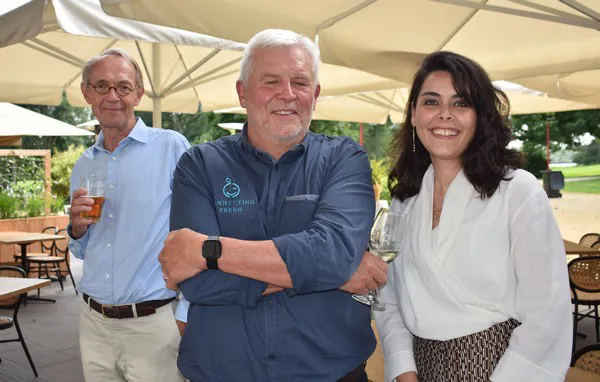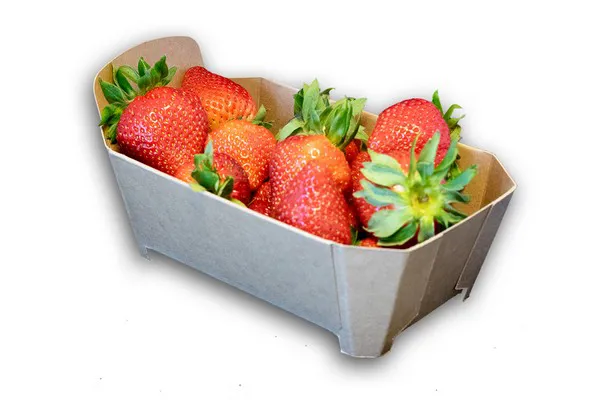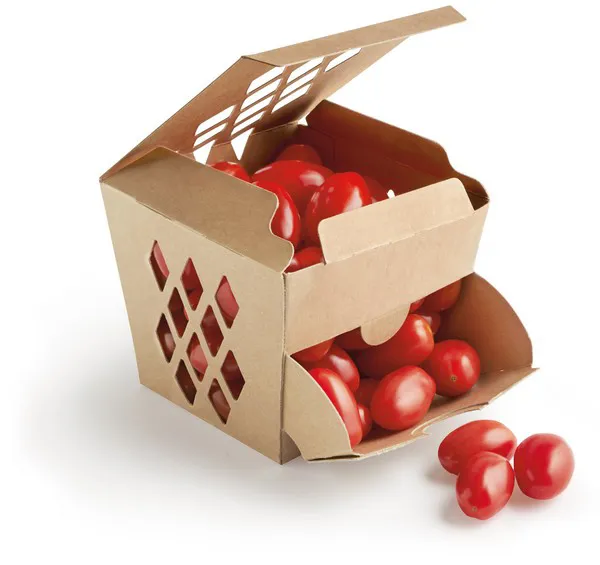Nic Jooste recently organized the second AGF-Kennisclub (Fruit and vegetable Knowledge Club) meeting. It was held on Wednesday, July 7, in the Netherlands. Nic is a fruit and vegetable sector sustainability and marketing consultant. The RAAD Groep sponsored the meeting. This is a financial and administrative consulting firm. They're fruit and vegetable sector specialists.
These meetings focus on sharing knowledge, information, and innovations. This latest one was dedicated to sustainable and circular packaging. Aad Hoekstra of A TOP Packaging led a masterclass. It was about the importance of sustainable, circular packaging and what this actually is.

A TOP Packaging's Aad Hoekstra addressed the meeting.
Packaging's value
Aad began by explaining exactly what sustainability is and why packaging is important. Studies show that if fruit and vegetables aren't packaged, 30-50% is wasted. So, packaging reduces food waste considerably. "However, if it affects the environment more than it saves it, its usefulness becomes useless," said Aad.

What is sustainable packaging?
The Van Dale dictionary defines sustainability as: 'having little impact on the environment'. "This is exactly the shortcut we use when developing our products. Companies often argue that cardboard packaging is just as environmentally damaging as plastic packaging. That's because both production methods emit the same amount of CO2. But, compare rPET to virgin cardboard. If you do this fairly, recycled cardboard 'beats' rPET, hands down. It's naive to think you should only measure sustainability by greenhouse gas emissions."

A TOP Packaging's strawberry punnet.
A TOP uses five factors to determine what environmental impact packaging has. And so achieve sustainable, circular packaging. These factors don't only include greenhouse gases released during the materials' production. But also the extent to which the product can be recycled. Is it genuinely recyclable? And how biodegradable is the packaging? They also consider how limited the raw materials used to produce the packaging are. As well as the energy required to produce it. And, finally, the packaging's impact on nature when it eventually ends there.
Cardboard versus plastic
“Using these five factors, cardboard scores far better than plastic in many areas," Aad continued. "Plastic isn't biodegradable. Say people study the earth's strata in a million years. It'll contain a plastic layer that marks the 21st century. It's also far harder to recycle plastic. That's because many plastic products are already impossible to recycle."
"Even those with just a small amount of processing, like a sticker or insert. The cardboard recycling industry is primarily built on recycling newspapers. This industry is, therefore, used to working with 'dirty' cardboard. That means there's a much higher possibility that cardboard will actually be recycled," Aad concluded.
A TOP end consumers
TOP A Packaging's Adriaan Verbeek explained that the company develop sustainable packaging. It doesn't sell or produce said items. The rights to the developed packaging are licensed to companies. These are those that want to use it for their products. And it works. They recently held a trial at a German retailer. Snack tomatoes were packaged in A TOP's recyclable cardboard packaging. The store displayed these alongside snack tomatoes in regular packaging. More than 65% of shoppers chose the A TOP packaging. So, it's not only sustainable; people are also intuitively attracted to this packaging.

More than 65% of the consumers chose this snack tomato container.
Click here for the photo report.
For more information:
Nic Jooste
NJ Immersed
Tel: +31 (0) 654 906 742
Email: nic@nicjooste.nl
Website: www.njimmersed.nl
Adriaan Verbeek
A TOP world's greenest packaging
Tel: +31 (0) 622 202 449
Email: a.verbeek@atoppackaging.com
Website: www.atoppackaging.com
